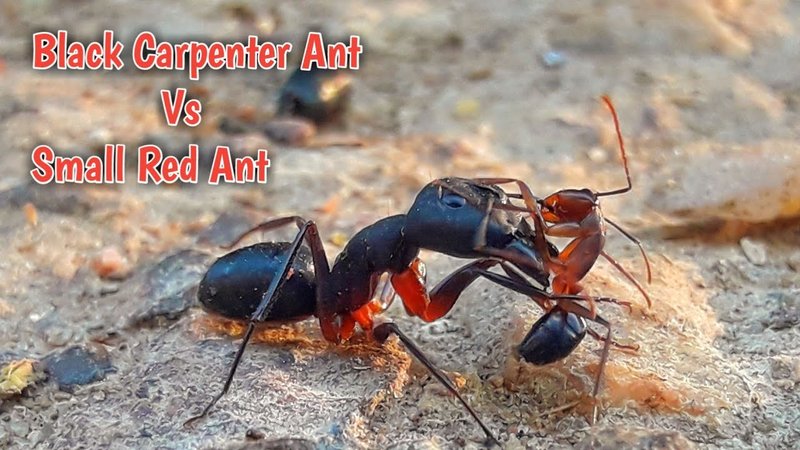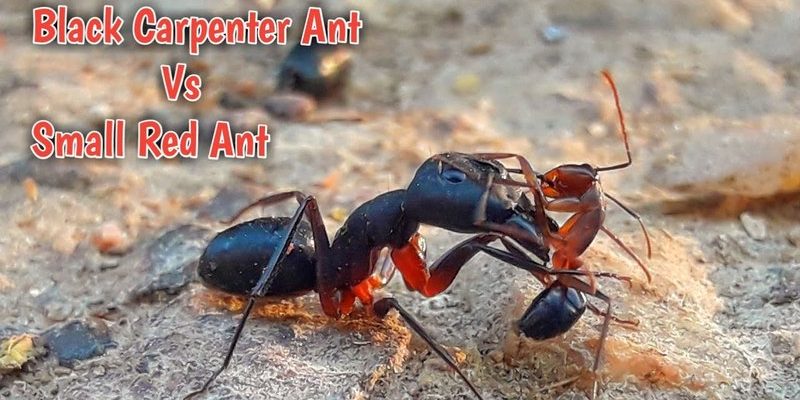
So, why should we care about understanding the differences between carpenter ants and their relatives? Well, for starters, knowing what you’re dealing with can save you headaches down the road—like dealing with a pest problem! Imagine mistakenly thinking you have carpenter ants when you really have a different type of insect, leading you down the wrong path for pest control. Let’s break things down and take a closer look at these remarkable insects.
What Are Carpenter Ants?
Carpenter ants are larger than many other common ant species, typically measuring between 1⁄4 and 1⁄2 an inch long. They can be black, red, or a combination of colors, and they have a distinct heart-shaped head. Unlike termites, which are often confused with them, carpenter ants don’t eat wood. Instead, they *excavate* it to create nests, which can lead to significant structural damage in homes.
These ants are social insects, living in colonies that can range from a few dozen to thousands of individuals. In the spring, carpenter ants often leave their nests to mate, which is when you might notice them buzzing around your home. If you spot a few of them inside, it could mean there’s an infestation lurking nearby.
How Do Carpenter Ants Compare to Termites?
You might easily confuse carpenter ants with termites due to their wood-related habits. However, they belong to different families. Carpenter ants are *hymenopterans*, while termites are *isopterans*. Here’s a quick rundown of the differences:
- Diet: Carpenter ants chew through wood to create nests, while termites consume cellulose found in wood.
- Nest Structure: Carpenter ants build their nests in wood but leave it intact, creating smooth galleries. Termite nests are typically more destructive and can cause weak spots in structures.
- Appearance: Carpenter ants have a pinched waist and bent antennae. Termites, on the other hand, have straight bodies and longer, more uniform antennae.
Understanding these differences can be crucial. If you suspect an infestation, identifying whether it’s carpenter ants or termites can direct you toward the correct treatment method.
Comparing Carpenter Ants to Other Ant Species
Carpenter ants aren’t the only players in the ant world. Let’s take a look at how they compare to two other common ant species: *odorous house ants* and *fire ants*.
Odorous House Ants: These ants are smaller, about 1/8 inch long. They get their name from the coconut-like smell they emit when crushed. Unlike carpenter ants, they prefer sweet foods and may nest in moist, decaying wood. If you’ve got a sweet tooth in your pantry, watch out for these little guys!
Fire Ants: Recognizable by their reddish-brown color, fire ants deliver *painful stings*. They build large mounds in open areas and can be more aggressive than carpenter ants. While carpenter ants tend to stay hidden in their nests, fire ants are out and about, searching for food.
The main takeaway here? Each ant species has its own characteristics, behaviors, and preferences.
The Nesting Habits of Carpenter Ants
Carpenter ants are quite picky about where they set up shop. They prefer to nest in moist, decaying wood, such as fallen trees or structural damage in homes. They create elaborate tunnels and chambers, which can weaken the wood over time.
If you’re wondering how to find their nests, look for signs of *sawdust*—which isn’t actually sawdust but the wood they’ve excavated. You might also notice their trails leading to food sources. They are especially active during the warmer months, so that’s when you should keep a closer eye out.
Why Carpenter Ants Matter in Ecosystems
While they can be a nuisance in our homes, carpenter ants play a crucial role in nature. They help decompose dead wood, returning nutrients to the soil. This process benefits other plants and insects around them. Think of carpenter ants as nature’s recyclers, breaking down materials that would otherwise stay stagnant.
Additionally, they can serve as prey for various birds and other wildlife, making them a vital part of the food chain. So, while you might not want them in your home, remember that they contribute positively to the environment.
How to Handle Carpenter Ant Infestations
If you suspect you have a carpenter ant problem, acting quickly is key. Here’s a simple plan to tackle the issue:
1. Identify the Infestation: Look for signs like sawdust, trails, or the ants themselves.
2. Locate the Nest: Try to find where they’re coming from, focusing on damp wood.
3. Treat the Nest: You can use bait stations or insecticides. If the problem seems extensive, don’t hesitate to call in a professional.
Remember, treating the visible ants without addressing the nest may lead to recurring problems. It’s like putting a Band-Aid on a wound; it might hide the issue, but the root cause remains.
Carpenter ants are more than just a troublesome pest; they represent a complex family of insects with distinct roles and behaviors. By comparing them to similar species, like termites and other ant types, you can better appreciate their place in our ecosystems. Plus, knowing how to identify and manage them can save you time and trouble when they intrude on your home.
So, next time you spot these busy little creatures, you’ll know whether you’re dealing with a carpenter ant or one of its cousins. Whether they’re sculpting your wooden beams or enriching the soil outside, each insect plays a part in the grand tapestry of life around us. Now that you have a clearer picture, you can act with confidence if you ever find those pesky carpenter ants knocking at your door!

